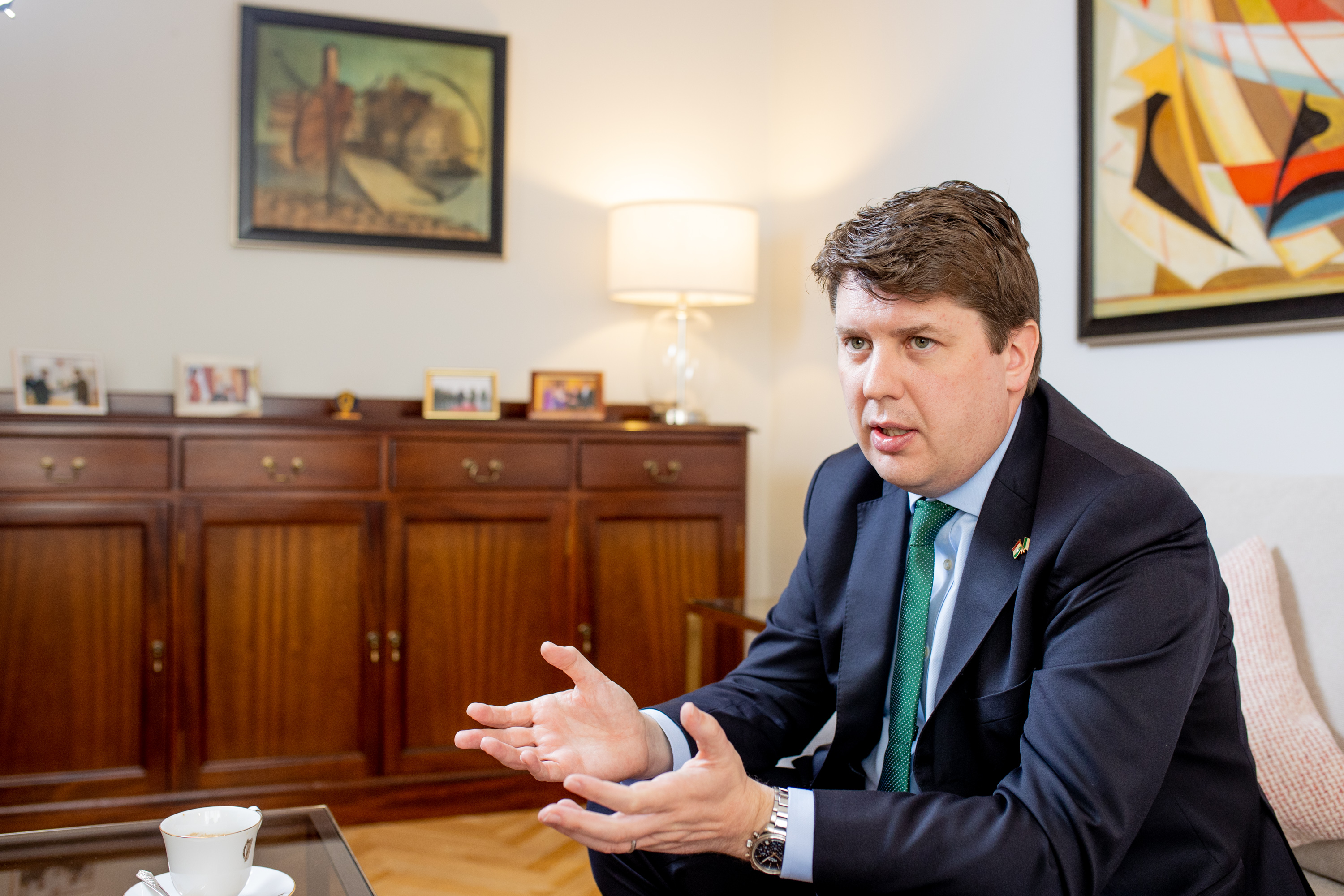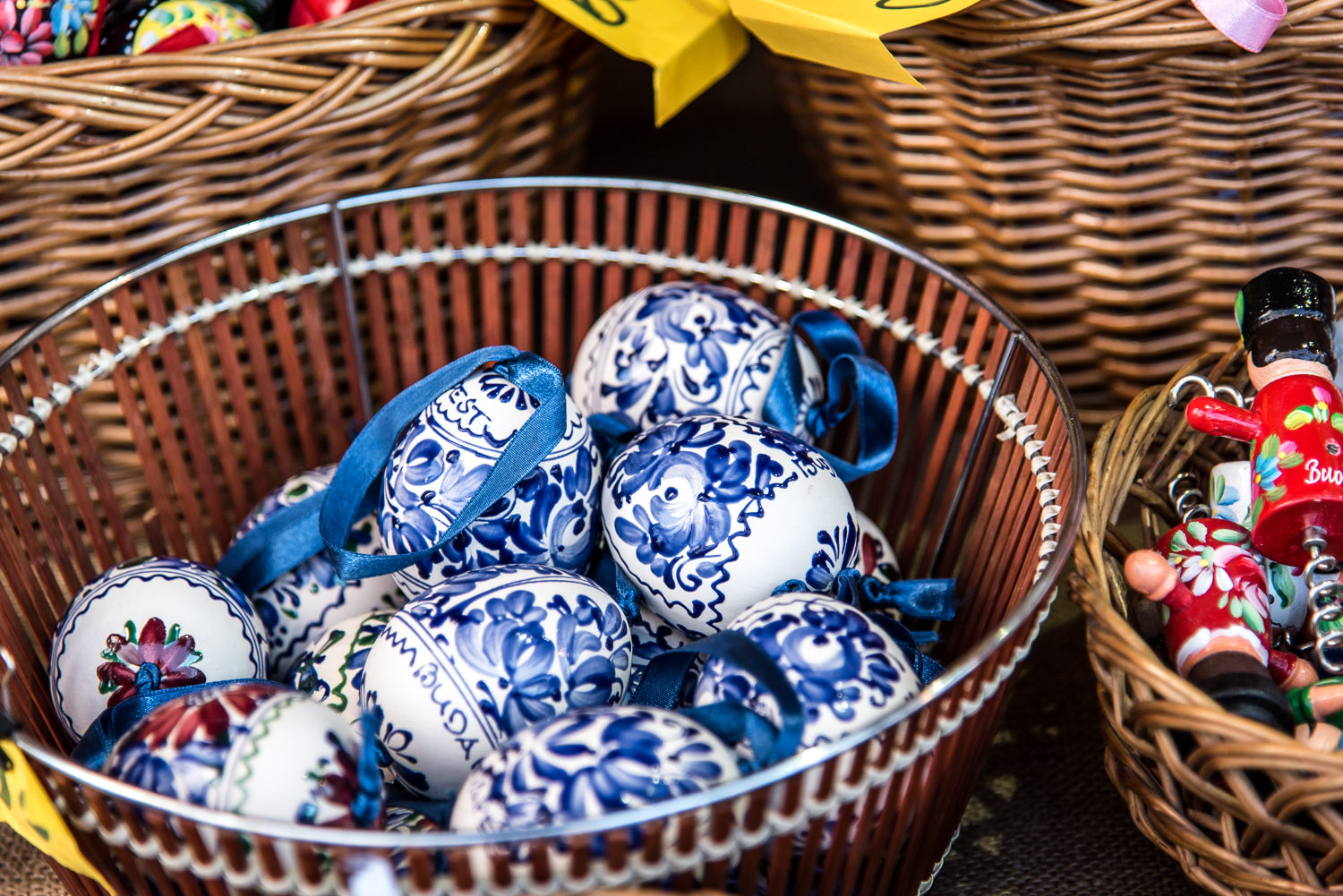For Ronan Gargan, his assignment here as Ambassador of Ireland is significant on many levels. Describing it as his first ‘bilateral posting’ – previously he was director of the EU-UK Unit in the Department of Foreign Affairs & Trade, dealing with the delicate Brexit negotiations – in terms of his career, his arrival in Hungary as ambassador (and non-resident ambassador to Montenegro and Kosovo) represents a real step forward.
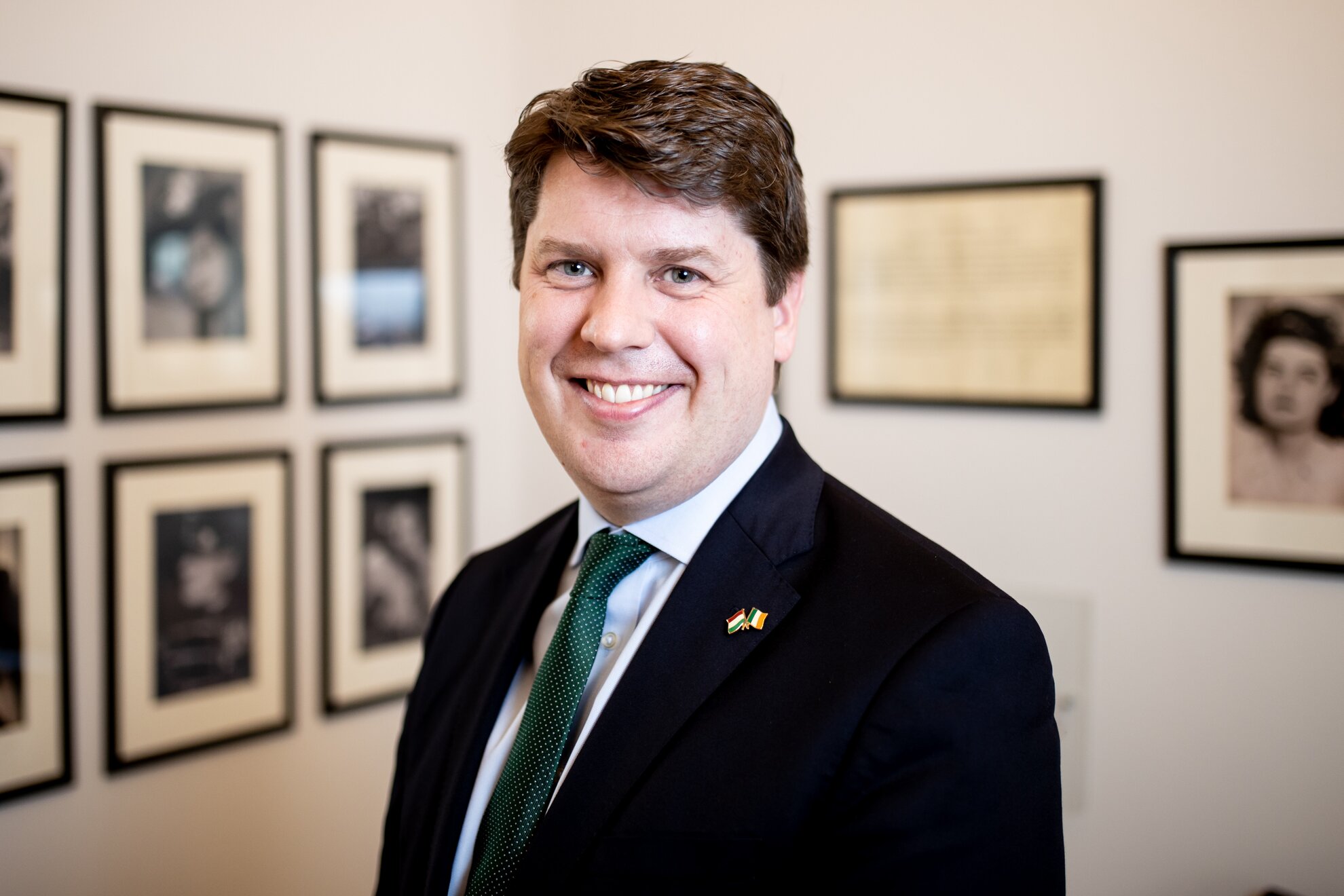
Personally, as well, his preferred choice of Budapest was no coincidence. “Michelle and I were first here in 2000 when we were Interrailing together. We both loved it. We climbed to the top of the Basilica and took in the view, including the Bank Center on Szabadság tér. Little did I know that I would later be working at the Irish Embassy there.”
While this office space in town is somewhat functional compared to the
high-profile American Embassy across Szabadság tér and grand properties in the diplomatic quarter at the
Heroes’ Square end of Andrássy út, the Irish ambassadorial residence in Buda is
anything but.
Mr Gargan kindly shows us round an elegant villa steeped in history.
A space in the lobby is dedicated to iconic Hungarian diva Katalin Karády, who
lived here, and whose suitably dramatic and tragic story the ambassador
relates.
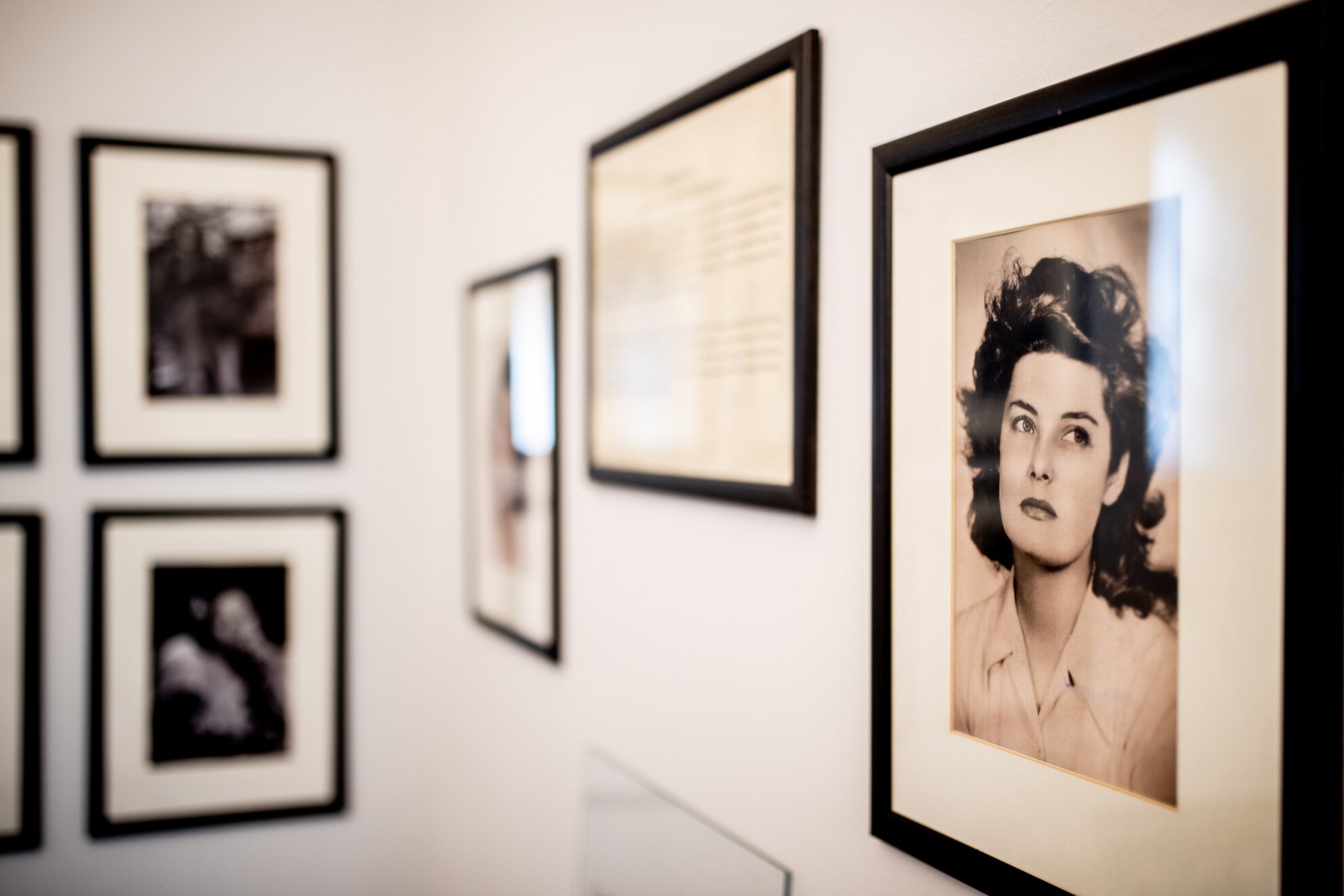
In an adjoining room, overlooking a beautiful garden, a stained-glass window depicts the Celtic legend of Tír na nÓg and its island paradise. More art awaits, and related stories, in the drawing room, where a collection of Irish artisanal whiskeys, crafted by the Boann Distillery, hints at the ambassador’s roots in Drogheda, 50km north of Dublin.
We start, though, with Budapest. Having been on the look-out for something adventurous, Mr Gargan and his young family certainly found it here. “This is a place where children can really be themselves,” says this dedicated family man.
Family-friendly Budapest
“It’s so unusual for nature to be right on your doorstep in a big city such as this one. And the kids love the fact that there’s always a playground in every district we go to. Restaurants go out of their way to cater to families, too.”
Budapest is also an EU capital, of course, and with Ireland now elevated to being the only English-speaking country in the European Union, its potential has expanded compared to before the 2016 referendum across the Irish Sea.
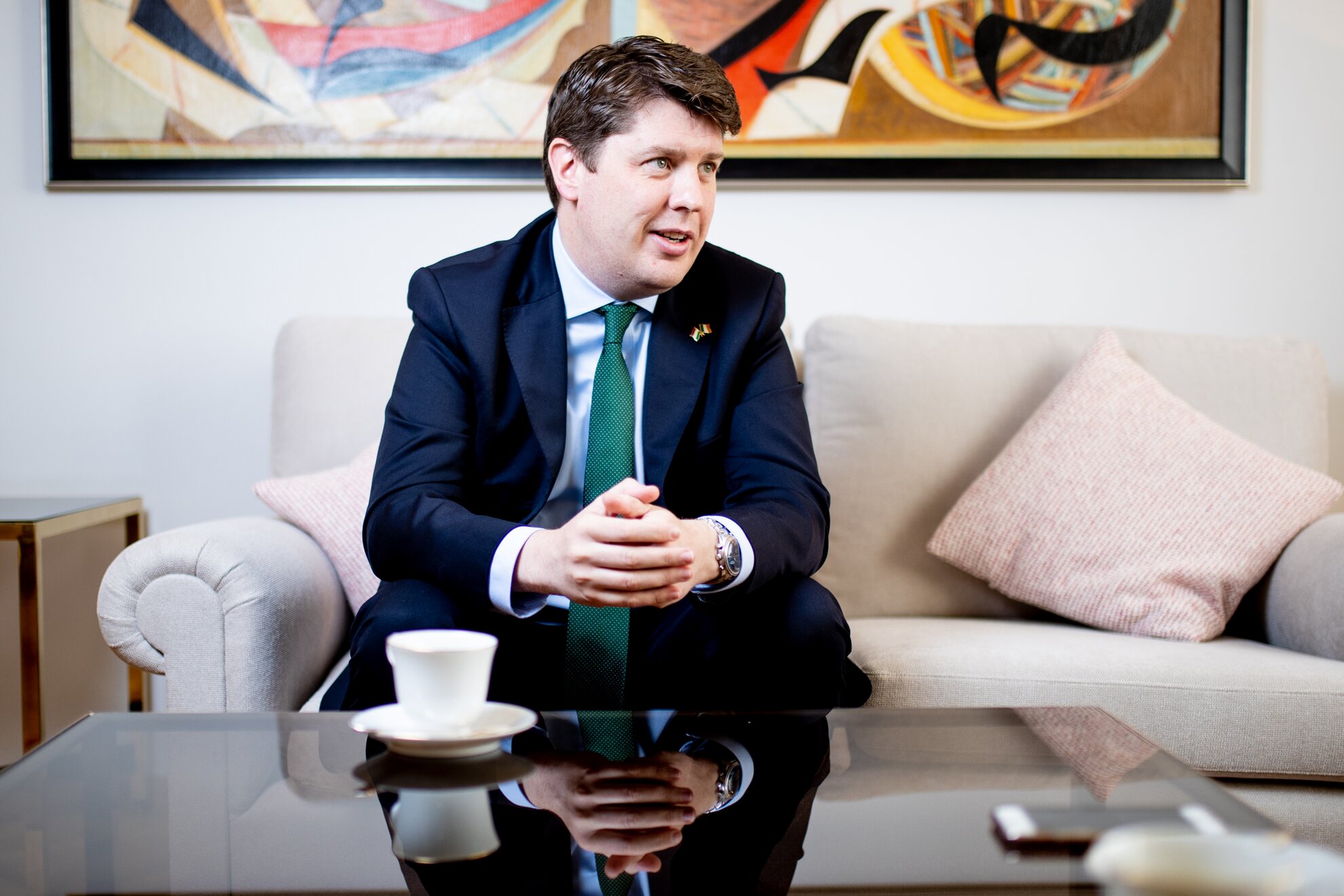
“We regret the UK leaving the European Union,” he says, “as within it, we had similar outlooks on matters such as trade and tax. Now we are encouraged to look beyond the UK in terms of the single market. We have the opportunity to build and strengthen partnerships with individual members and not be so reliant on the UK. With Hungary, as well as the single market, we are like-minded on the need to develop sustainability and smart cities, and building links between them”.
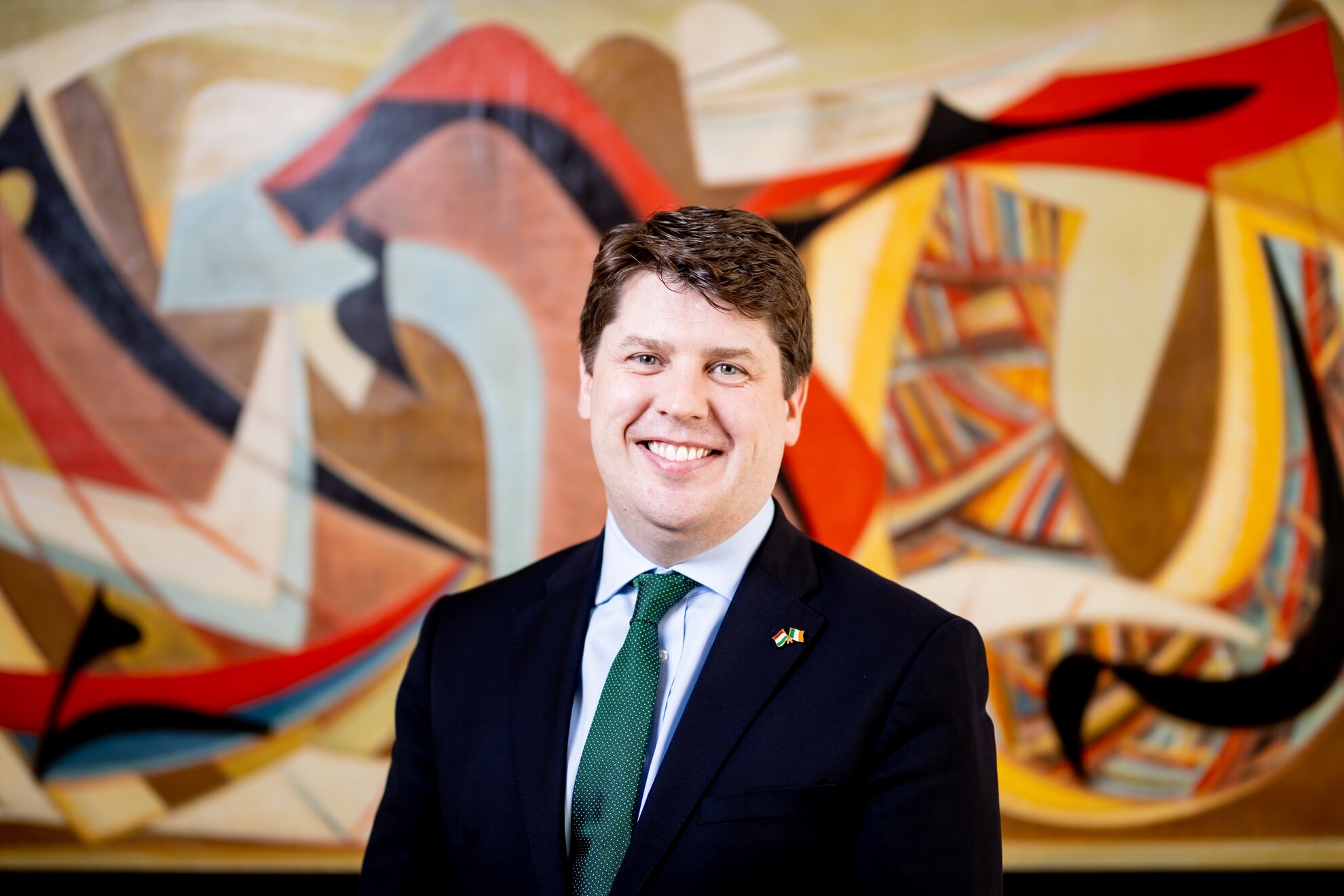
This brings us onto the hot topic right now: the environment. With the Green Party part of the ruling coalition in Ireland, it’s no longer a marginal matter in the political sphere, either. “In terms of diplomacy, I believe that climate change is going to be the issue in the next five to ten years,” says Mr Gargan.
“It’s just the sheer facts of it. We need to act now. And the targets we set, we have to assess what that means for our economy. We can’t tackle these issues individually. Carbon emissions don't respect borders.”
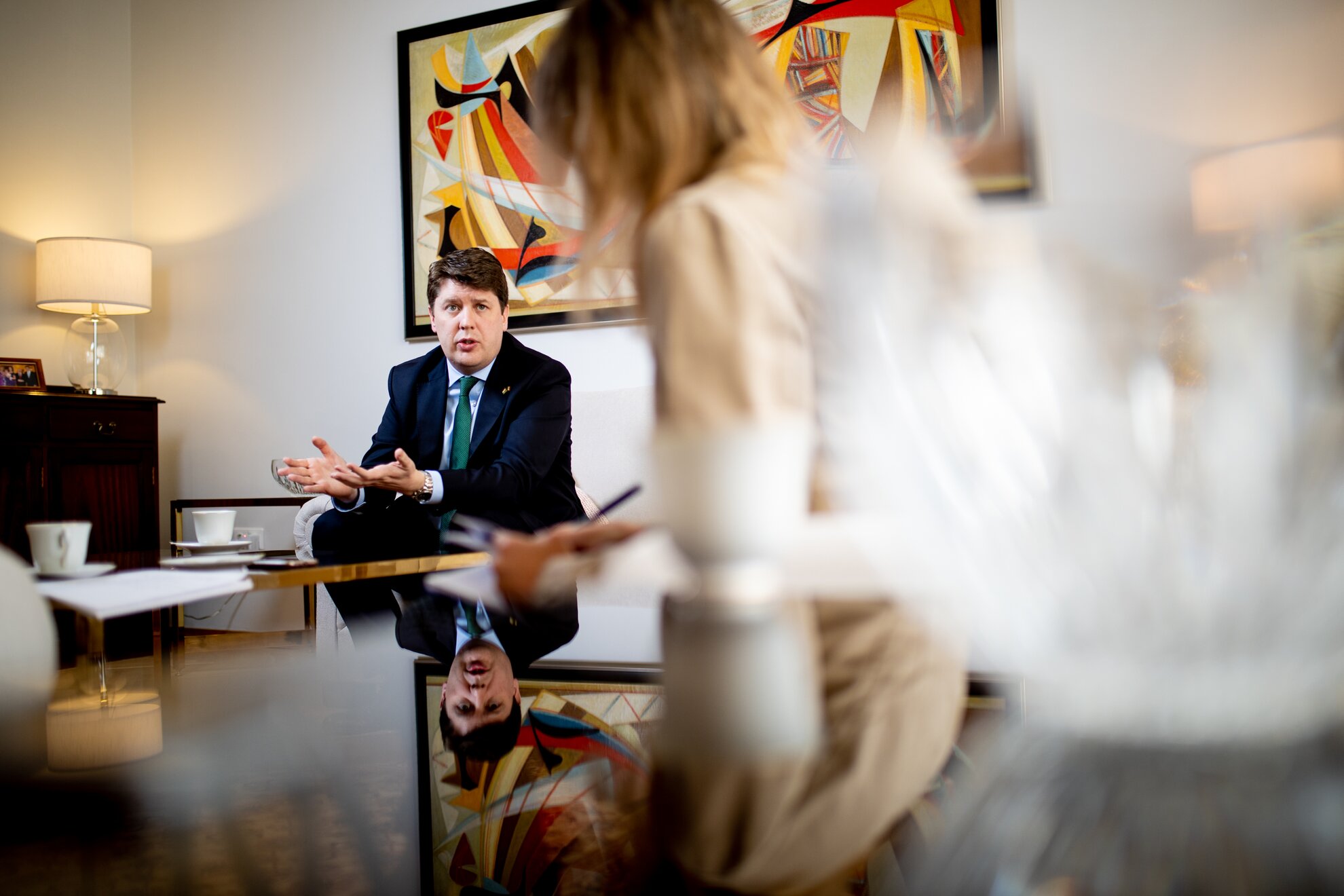
“These are real challenges, and the developed countries have a responsibility towards the developing sector. We may have certain differences from Hungary in terms of energy but, like in Ireland, cities here are embracing the challenge of climate change and looking for new solutions."
Green Budapest
"In Budapest, there’s the introduction of electric buses and they are looking into using their natural thermal waters as an affordable resource for heating. We all have to work together to achieve the same outcome.”
Of course, there are other areas of common ground. “Culture plays a huge role in diplomacy,” explains Mr Gargan. “The best way to build understanding between countries is through culture. Not only is it a great conduit but it’s enjoyable in its own right. We want to develop strong cultural links with Hungary. In a historical context, as nations, we have both dealt with challenges in dealing with larger neighbours and gone through different processes in terms of achieving our own independence.”
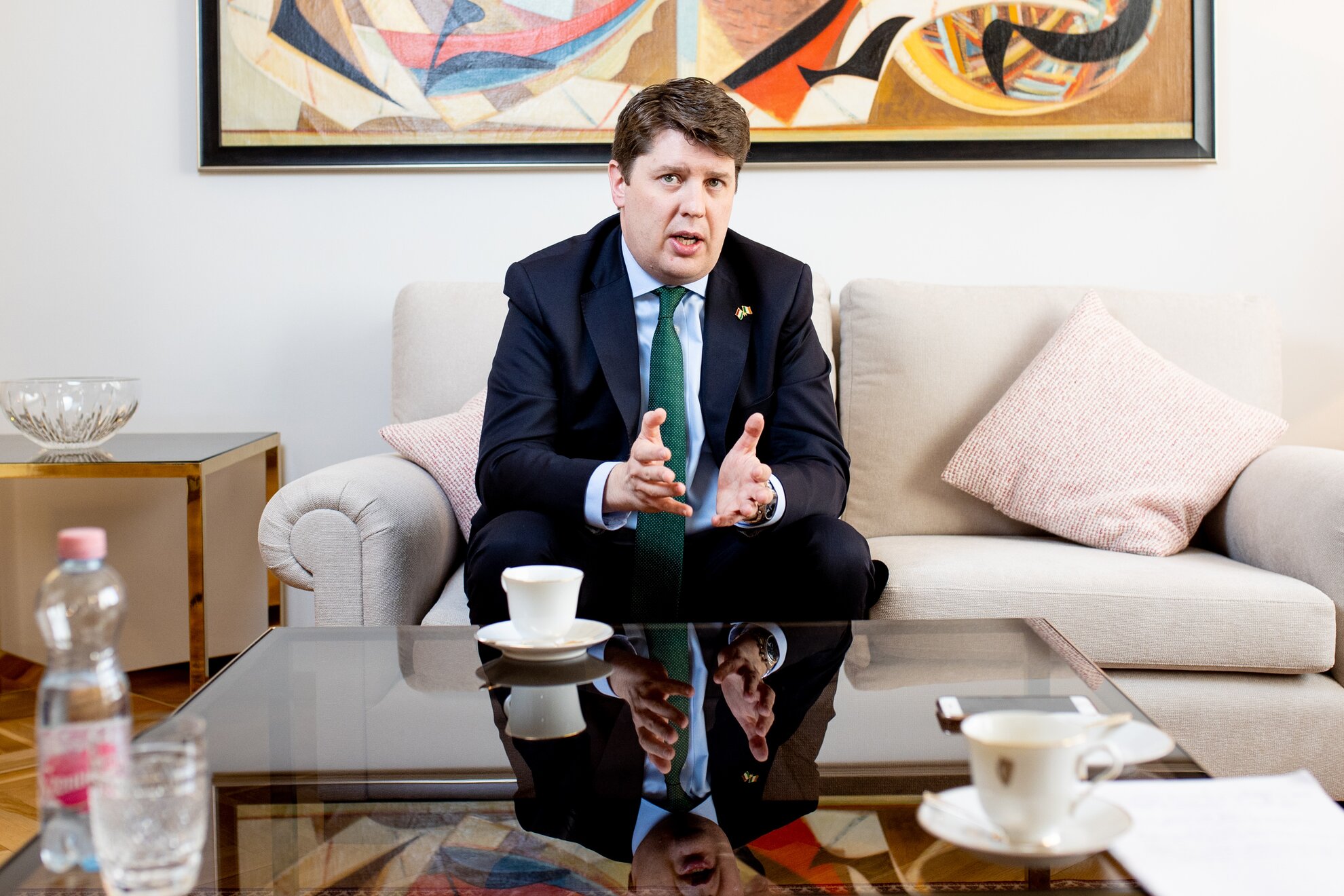
Mr Gargan refers to specific examples – the celebration of Bloomsday in Budapest and Szombathely, where a statue of James Joyce celebrates the link with the main protagonist in Ulysses – then he points to the paintings around him. Brightening half the drawing room, works by Ferenc Martyn include a large, striking piece called the High King of Ireland.
“Ferenc Martyn was very proud of his Irish roots,” says Mr Gargan. Martyn’s
great-great-grandfather was from the famous Galway tribe of the same name and
came to Hungary in 1790 to fight with the Austro-Hungarian Army. Living in
Paris then Hungary, Modernist artist Martyn created a series of illustrations
for Ulysses, 24 of which hang in the Irish Museum of Modern Art in Dublin, personally
donated by the artist himself on the occasion of the centenary of Joyce’s birth.
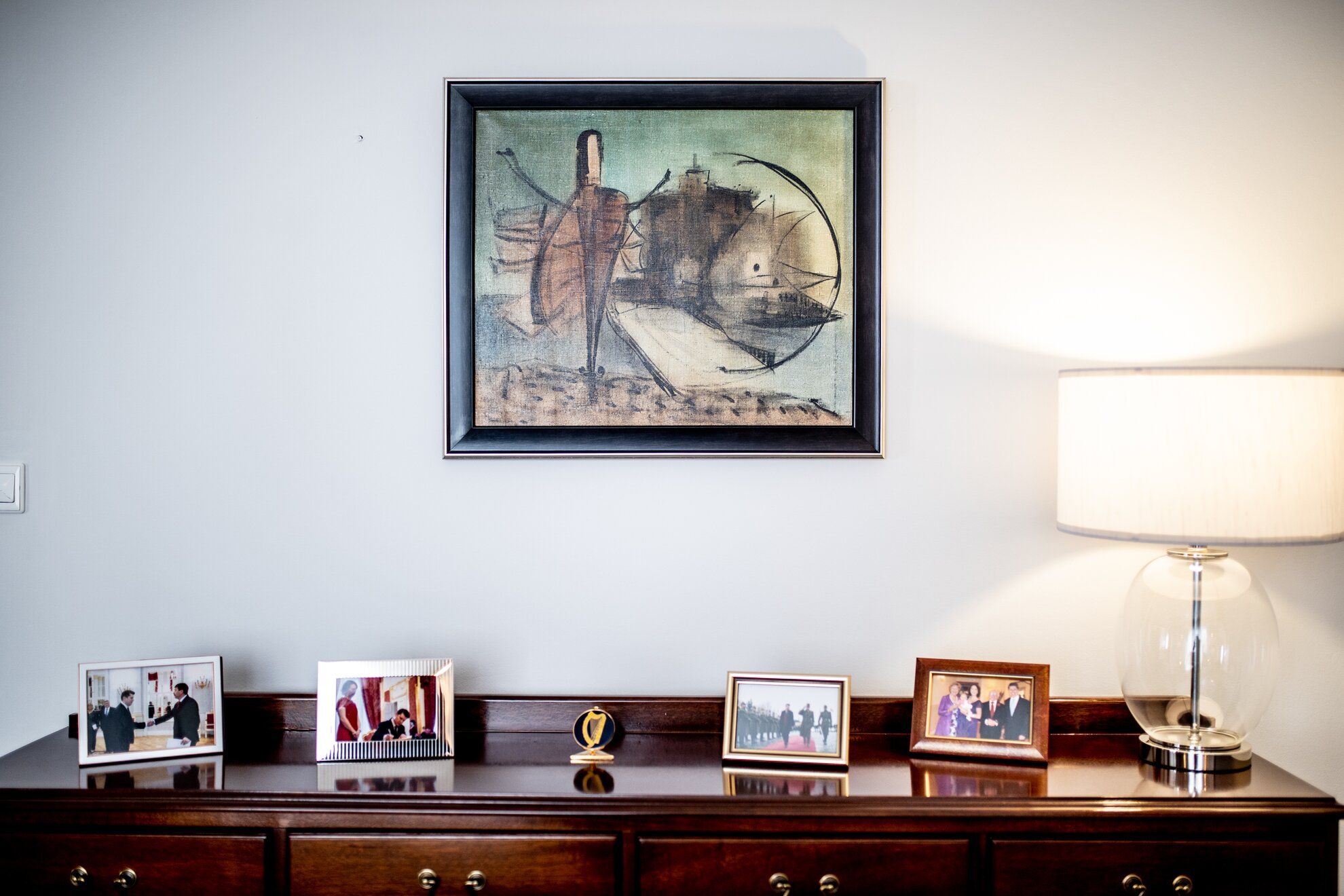
Mr Gargan, in turn, donated 24 prints of these works to the University of Pécs when he visited. He also helped stage an exhibition of Martyn’s works at his own residence. The City of Tata, where the artist once lived, donated paintings for the show which now still hang here, generously provided on long-term loan.
Annual greening
St Patrick’s Day is another annual event taken to another level here. As well as the biggest parade in Central Europe, attracting 4-5,000 people before the pandemic, 17 March also sees the greening of landmarks around the world. “It’s a great initiative introduced by Tourism Ireland,” says Mr Gargan. “We’re currently in discussion with District I to have Citadella and the Fishermen’s Bastion green-lit next year. It’s a good way to promote Irish culture in Budapest, and Budapest to an Irish audience.”
Other concrete examples of Hungarian-Irish co-operation revolve around culture and education. “I was really surprised by how deep the knowledge and appreciation of Irish culture is here,” says Mr Gargan. “Not just literature, but Irish art, music, dancing and even language.”
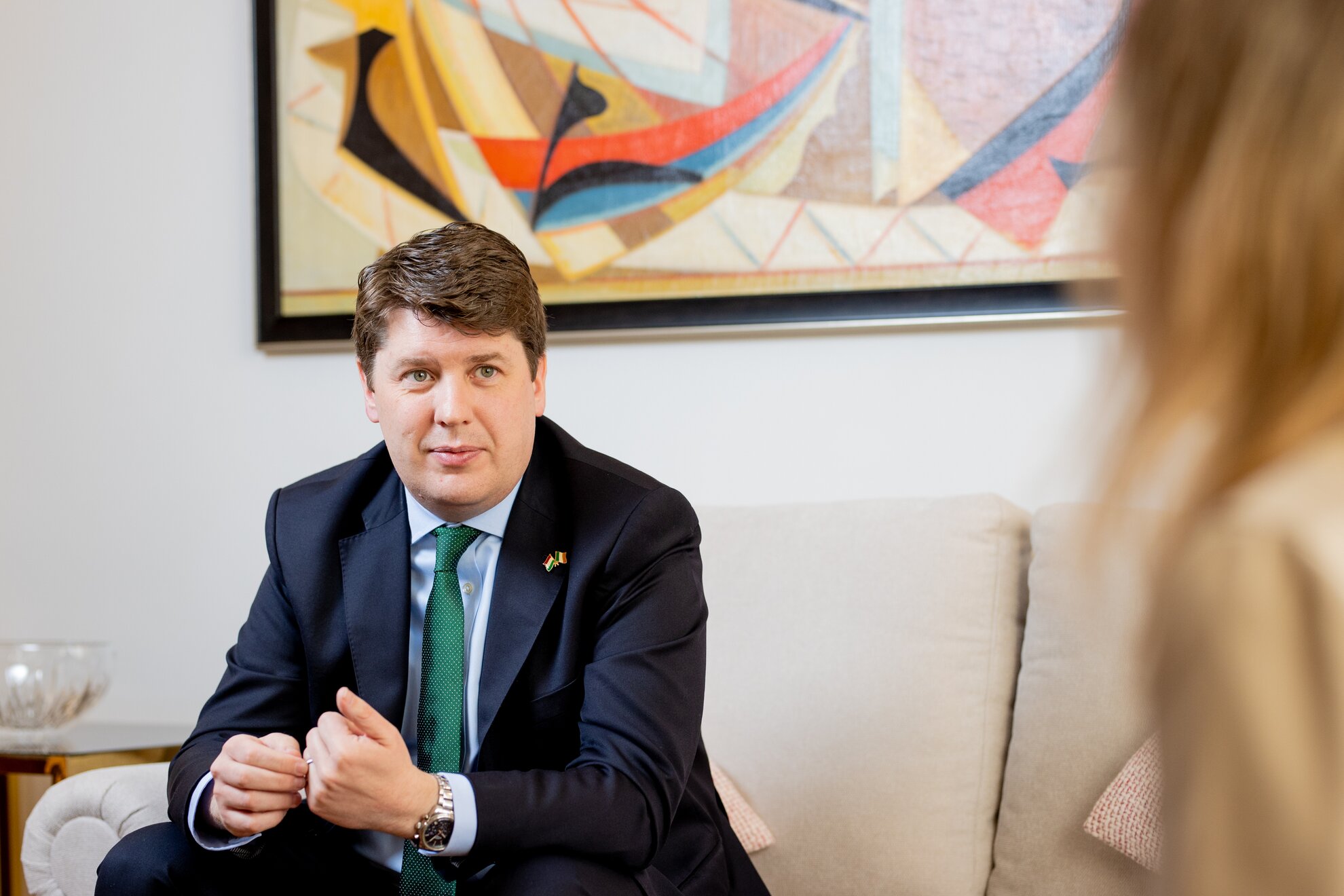
Every year, the embassy supports the Seamus Heaney Memorial Lecture at the Hungarian Academy of Sciences, inviting over a senior academic to give a presentation. The embassy also helps arrange a bursary for young Hungarians to study in Ireland, sponsored by the Irish-Hungarian Business Circle. Meanwhile, Budapest Centre for Irish Studies organises book launches and talks.
“We would also like to broaden the audience beyond scholars,” reveals Mr Gargan. “We are planning a series called Pop-up Gaelic, so that a Gaelic speaker here can teach Irish-language classes in an informal setting, like one of the Irish pubs. We are also launching a website, the Fifth Province” – a reference to Ireland having four provinces – “which will be a one-stop shop for everything Irish in Hungary, events, talks and courses, bringing together all these activities under one umbrella”.
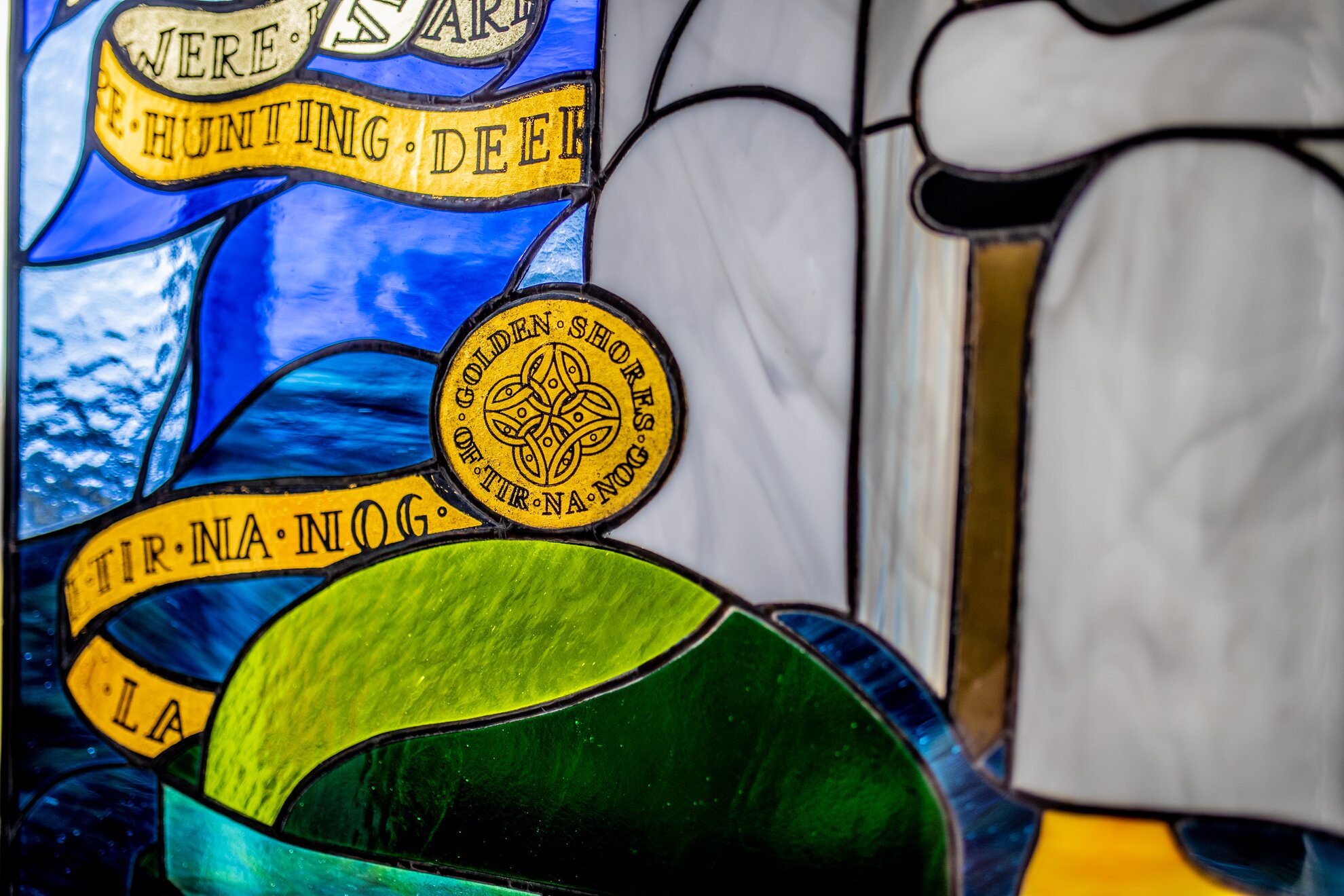
“The whole area of education is one that’s possible to expand,” says Mr Gargan. “We would also like universities in Ireland to widen their links with Hungary. There’s great potential in an exchange of education. The 200 or so Irish students studying medicine and veterinary medicine are here in Budapest for six years. They then take that – hopefully positive – experience with them wherever they go, and the same for Hungarians studying in Ireland when they come back home. One idea is that we establish a society of alumni, to create a network of former students attached to both countries.”
Having arrived in August 2019, much of Mr Gargan’s time here was spent when borders were closed, his family enjoying walks around the Castle District with few tourists around. Back home, Galway met the serious challenge to fulfil the city’s role as European Capital of Culture.
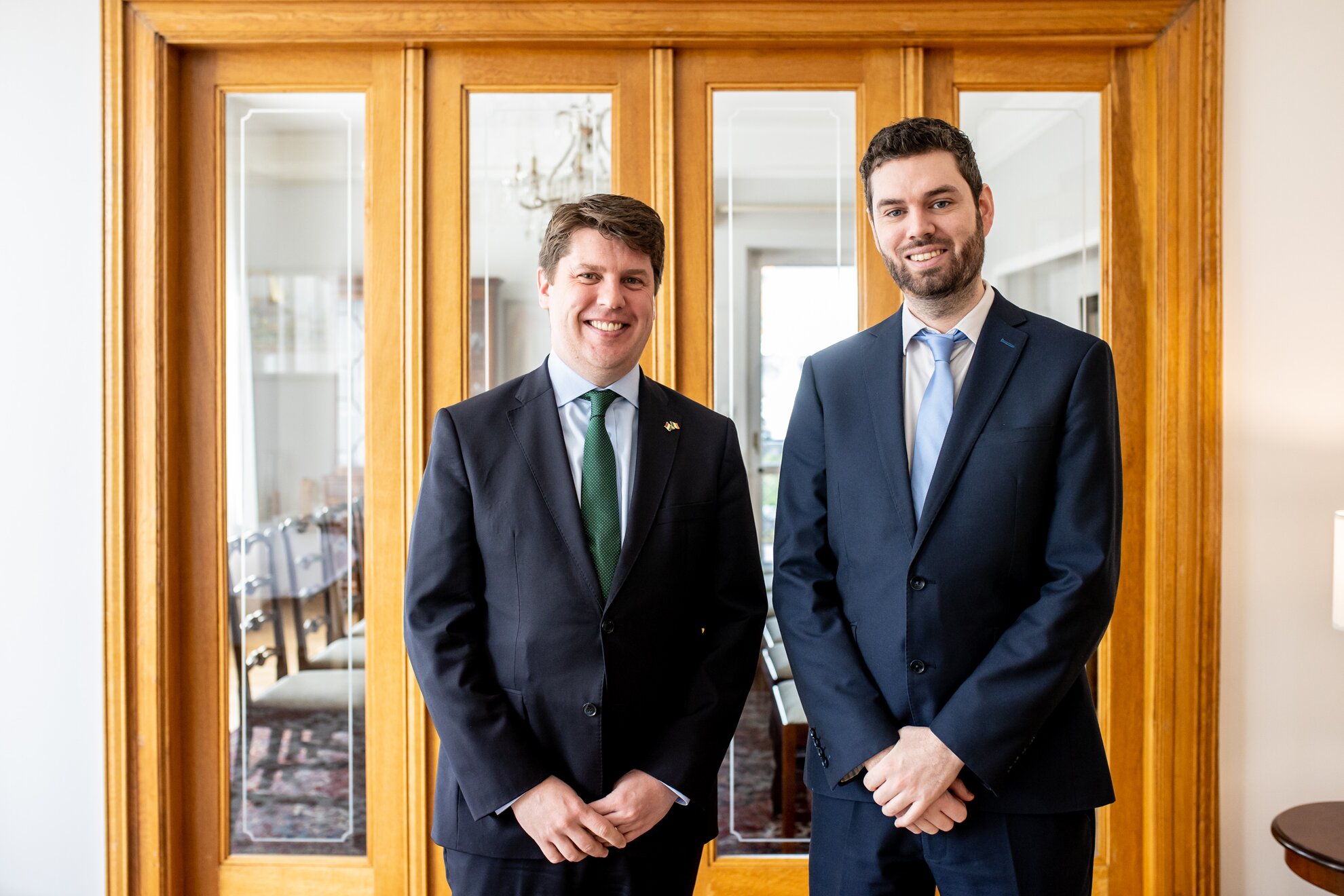
With Veszprém near Lake Balaton due to assume the mantle in 2023, Mr Gargan offers a little advice for organisers here. “Be as active as you possibly can,” he says. “Be open to inviting other European artists inspired by the surroundings – some amazing Scandinavian art was produced in Galway. It takes a lot of planning, but try to involve the local community as much as possible. Make them feel part of the event.”
